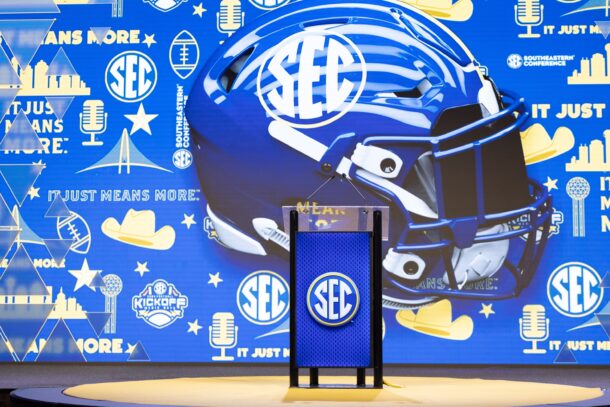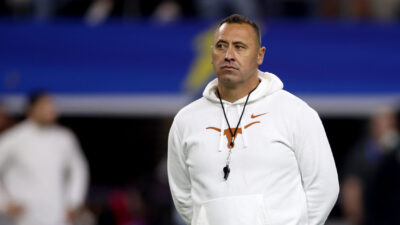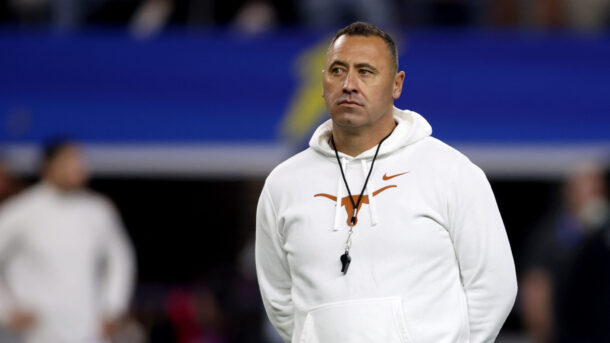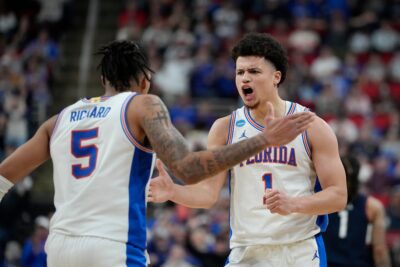Ad Disclosure
Back for more: How SEC tailbacks who returned for senior year fared in the NFL
By Ethan Levine
Published:
Football is a contact sport, but there are few positions on the field that endure more contact on a regular basis than running backs.
Starting tailbacks take on contact from bigger defenders on virtually every snap, be it as ball-carriers, pass protectors or receivers out of the backfield. They have the shortest shelf life of any NFL players, and as a result it’s become trendy for the nation’s top college tailbacks to leave school a year early in order to get paid for as many of their body’s remaining carries as possible.
This is not a hard-and-fast rule for all college running backs, but it has become the go-to move for backs projected to go in the first three or four rounds. This year alone, the SEC’s Todd Gurley, T.J. Yeldon, Mike Davis, Matt Jones, Josh Robinson and others all passed on another year of college ball to join the NFL, even though only Gurley and Yeldon were taken in the first 90 picks.
But does leaving school a year early really benefit one’s pro career? It certainly benefits their bank accounts, ensuring them NFL money without further injury risk at the amateur level. But does leaving school early lead to prosperous NFL careers?
In an effort to answer that very question, we took a look back at a few tailbacks who left school a year early since 2000 as well as a few others who didn’t. The goal was to determine if there were patterns shown by the players who follow one of these two paths, and the results were fascinating.
Before we dive in, let’s explain one key principle to this little experiment: The players who left early were all players who were projected to go in the first five rounds of the draft with another year of college eligibility remaining. Essentially, the players in question had to decide whether or not to come back to school; if they’re not projected to be drafted, there is no decision, so that wouldn’t really fit what we are trying to determine.
Got it? Now let’s see if we can determine whether leaving early is the right move or not.
RETURNED FOR SENIOR SEASON
Christine Michael (Texas A&M — 2013): Michael had already posted two 800-yard seasons as part of a spread offense by the end of his junior year at A&M, and he had a chance to make a clean break as A&M changed coaches, quarterbacks and conferences after the 2011 season. Instead, he opted to return for his senior season in 2012, struggling to reach the 400-yard mark in the SEC by season’s end. He was still a second-round pick in 2013, but has only rushed for 254 yards in two NFL seasons.
Zac Stacy (Vanderbilt — 2013): Stacy could have gone pro after the 2011 season, a season in which he ran for nearly 1,200 yards and 14 touchdowns while leading Vandy to its first bowl appearance of his career. He decided to return to school for another year with head coach James Franklin, and although he rushed for another 1,100 yards and 10 touchdowns that year, he still fell to the fifth-round of the 2013 draft.
Vick Ballard (Mississippi State — 2012): After transferring to MSU from junior college, Ballard could have left Starkville after his first season, during which he ran for 968 yards and scored 19 touchdowns. He thought another year of SEC seasoning might do his career good, but after breaking the 1,000-yard plateau with 10 more touchdowns as a senior in 2011, he fell to the fifth round of the 2012 draft, although he’s been productive for the Indianapolis Colts.
Anthony Dixon (Mississippi State — 2010): By the end of the 2008 season, Dixon’s third at Mississippi State, he’d already posted a 1,000-yard season, an 800-yard season and 30 rushing touchdowns. He left no doubt in his standing as MSU’s most accomplished back ever, but even that couldn’t sway him from returning to Mississippi State in 2009 to play for new coach Dan Mullen. Dixon thrived that season, rushing for nearly 1,400 yards and 12 touchdowns, but fell to the sixth round anyway. In six NFL seasons, Dixon has 890 career rushing yards.
Charles Scott (LSU — 2010): Scott is the poster child for the argument that players ought to leave school as soon as they’re eligible. After he ran for 1,100 yards and 18 touchdowns as a junior in 2008, he could have been a high NFL draft pick. But he decided to return to school, and only ran for 542 yards in 2009, falling to the sixth round of the 2010 draft. He never logged a carry in two NFL seasons.
Kenny Irons (Auburn — 2007): After two unproductive seasons at South Carolina, Irons transferred to Auburn, sat out a year per the NCAA’s transfer rules, then ran for 1,300 yards and 13 touchdowns as a junior at Auburn in 2005. He could have made the leap to the pros after proving his worth on the Plains, but instead returned for the 2006 season, rushing for only 893 yards and four touchdowns. The extra year of work likely didn’t help Irons, as he tore his ACL in his first preseason game as a rookie and never logged an NFL carry after that.
Ronnie Brown (Auburn — 2005): Brown was actually eligible to leave for the NFL after posting his only 1,000-yard season at Auburn as a third-year sophomore in 2002. He returned not once but twice-over, falling short of 1,400 yards those two seasons combined while sharing time, and the spotlight, with Cadillac Williams. He ended up being the more productive of the two and the higher draft pick in the NFL, helping develop the brief “Wildcat” fad in the NFL as a member of the Miami Dolphins.
Cadillac Williams (Auburn — 2005): Williams ran for 1,300 yards as a junior in 2003, and after a season like that and with the prospect of sharing time with Brown in 2004 looming, many thought Williams would make the jump to the league. He chose otherwise, and returned to run for 1,100 yards as a senior in 2004. He dominated the NFL as a first-round pick early in his career, but injury woes helped cut his career short, which is why so many backs are often in a rush to get to the league.
Shaun Alexander (Alabama — 2000): If there was ever a poster child for the benefits of returning to school, it’s Alexander. He ran for more than 1,000 yards at Alabama as a junior in 1998 and could have jumped right to the league, but decided to return for one more year, a year in which he ran for nearly 1,400 yards and 19 touchdowns. He was a first-round pick in the 2000 draft, posted multiple 1,000-yard seasons in the NFL and eventually set a single-season record for rushing touchdowns before calling it a career.
LEFT FOR THE NFL
Jeremy Hill (LSU — 2014): In his first and only year as LSU’s primary tailback, Hill ran for 1,400 yards and 16 touchdowns, and wasted no time making the jump to the league. His head coach, Les Miles, argued Hill might’ve been a first-round pick had he returned for another season, but he instead went in the second round as the second running back chosen. He ran for 1,100 yards as a rookie, starting in the backfield for a division-champion Cincinnati Bengals team, and scored nine touchdowns along the way.
Tre Mason (Auburn — 2014): Mason figured his draft stock might never be higher than it was after he amassed nearly 500 yards in his final two college games, so he left school a year early and was taken in the third round. In only half a season as a starter he ran for more than 700 yards, and he’ll now split time in the St. Louis Rams backfield with 2015 draftee Todd Gurley.
Eddie Lacy (Alabama — 2013): As was the case with most Nick Saban backs at Alabama, Eddie Lacy had to split carries and wait his turn to start his career in Tuscaloosa, eventually receiving a starting nod as a junior in 2012. He ran for 1,300 yards and 22 touchdowns that year, and Alabama won its most recent national title in the process. He was a second-round pick in 2013, and is now considered one of the most punishing runners in the NFL, complementing the Green Bay Packers’ spread attack to perfection.
Knile Davis (Arkansas — 2013): Davis ran for 1,300 yards as a sophomore in 2010, missed the 2011 season, then ran for a putrid 377 yards in 2012 at worse than 3.5 yards per carry. Still, he decided to forgo his senior season and leave for the NFL, where he was a third-round selection in the 2013 draft. He’s spent his early career as a backup in Kansas City behind Jamaal Charles.
Marcus Lattimore* (South Carolina — 2013): Lattimore is a unique case on this list in that he left for the NFL almost out of necessity. He ran for 1,000 yards as a freshman in 2010, and looked even better in 2011 and 2012, before both seasons were cut short due to injuries. He blew out his knee in a rather gruesome way in 2012, and left for the NFL knowing he’d never be able to recover in time to play in 2013. So he declared for the draft, was a late-round pick by the 49ers, spent two years on the injury list getting paid while working towards a comeback before retiring due to his knee troubles.
Trent Richardson (Alabama — 2012): Richardson was a consensus All-American in 2011, rushing for 1,600 yards and 21 touchdowns for the national champion Crimson Tide. He knew he’d be a first-round pick, so he left to get paid in the NFL, which he did as the No. 3 overall pick in the 2012 draft. Unfortunately, Richardson was a mega-bust, dealt in just his second year in the league. He is already on his third team and has averaged 3.3 yards per carry for his career.
Mark Ingram (Alabama — 2011): After becoming Alabama’s first Heisman winner ever in 2009, Nick Saban’s first title year in Tuscaloosa, Ingram returned for his junior year in 2010 and only ran for 875 yards while splitting time with Richardson. Knowing Richardson had to return to school, Ingram left after his junior year despite the drop in his numbers, and was a first-round pick by the New Orleans Saints. He’s yet to rush for 1,000 yards in a season, but he’s become a growing part of the Saints’ high-powered offense.
Knowshon Moreno (Georgia — 2009): After redshirting in 2006, Moreno tore up the SEC in 2007 and 2008 to the tune of 2,700 yards and 30 touchdowns in that time. He was a first-round lock, and went 12th overall in the draft. However, another year of seasoning might have done him some good, as his only 1,000-yard season came in his lone season alongside future Hall of Fame quarterback Peyton Manning, who’s created opportunities for dozens of backs throughout his career.
Glen Coffee (Alabama — 2009): To think, had Coffee returned for his redshirt senior season in 2009, he might have been a part of Alabama’s national title team, and Ingram may never have won his Heisman. Instead, Coffee left for the NFL after rushing for nearly 1,400 yards and 10 touchdowns in 2008. He was a third-round pick by the 49ers, but retired after one season, which makes his early exit from Alabama all that much more peculiar.
Darren McFadden (Arkansas — 2008): In an effort to conserve time, I’ll cut right to the chase. McFadden ran for 1,100 yards as a freshman, then 1,600 yards, then 1,800 yards as a junior. He was a two-time consensus All-American, and posted those numbers while sharing time with fellow All-SEC candidate Felix Jones. He was the best tailback in college for two years in 2006-07 (post-Reggie Bush), and there was never a thought he might return for his senior season. Unfortunately, injuries and a draft ticket to Oakland derailed his pro career to an extent.
Felix Jones (Arkansas — 2008): Even while backing up McFadden, Jones still managed to run for 1,100 yards in both 2006 and 2007, scoring 17 touchdowns in that time. Some thought he might return for his senior year to serve as the workhorse without McFadden in front of him, but chose to save those carries for the NFL, where he could get paid for them. He was drafted by Arkansas alum Jerry Jones and the Dallas Cowboys, and was productive as a situational playmaker, although he never got his chance to be the primary back of a team.
Rudi Johnson (Auburn — 2001): Johnson transferred to Auburn from junior college in 2000, and in his first year in the SEC he ran for 1,500 yards and 13 touchdowns, earning SEC Player of the Year honors. He wasted no time in leveraging that season to benefit his NFL draft stock, and after he fell to the fourth round of the draft (likely due to lack of FBS experience) he posted three 1,000-yard seasons as the starter in Cincinnati from 2004-06.
Jamal Lewis (Tennessee — 2000): Lewis peaked as a freshman at Tennessee, rushing for 1,300 yards before injuries slowed his sophomore and junior seasons. Rather than returning for his senior year to prove he’d gotten himself healthy, he felt he ought to start getting paid right away before injuries set back in, so he declared for the draft and was taken No. 5 overall. He starred for the Baltimore Ravens before landing in Cleveland, where he joined an exclusive list of runners to post a 2,000-yard season in the NFL.
CONCLUSION
There are exceptions to the rule, of course, but the players detailed above indicate that if you have the talent, you should jump to the league right away. Even if you fall in the draft, it is better to prove yourself and work your way up from within the NFL framework (while receiving a paycheck) than to do it in college without a paycheck.
The players who left early almost universally panned out, while a number of the players who returned to school may be regretting that decision years later. There are more factors than health and money that go into these decisions, but the moral of this story is simple: if the NFL wants you, don’t say no.
A former newspaper reporter who has roamed the southeastern United States for years covering football and eating way too many barbecue ribs, if there is such a thing.




